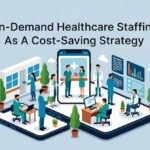Medical facilities and patients face new challenges every day that can impact the level of care, treatment, and service provided or received. In some ways, inflation is to blame. Other things, like device management and staffing issues, create this ripple effect. Below, we’ll explore some of the most common challenges medical facilities face today.
Increasing Costs for Care
Not only is the cost of care inflated for patients, but providers, administrators, and management also feel the rising costs.
Obtaining new devices, upgrading technology, and maintaining a facility with basic needs are at an all-time high. As a result, the offset trickles into how much it costs for patients to receive care.
This increase also impacts a facility’s revenue because all employees need to be paid fairly for their labor. Facilities are facing new financial challenges they may not have prepared for, and it’s causing increased stress and burdens on all medical sectors.
Equipment Malfunctions or Errors
Many facilities face device or equipment errors as technology and components age. With the new financial burdens of maintaining daily operations, replacing and obtaining new equipment is becoming relatively challenging.
It’s time to upgrade the equipment when machines throw error codes or productivity slows altogether. Partnering with a reputable vendor for a leasing agreement is one of the most feasible options for a facility facing daily financial struggles.
The Cost To Obtain Pharmaceuticals
Stocking a facility with the necessary pharmaceuticals to treat patients is a significant aspect of providing safe and ethical medical care. Unfortunately, the cost of obtaining these essential pharmaceuticals and the accompanying equipment is rising.
Not only do these expenses affect facilities and administrators, but they also impact patients because they typically suffer the most.
Arriving at the pharmacy to pick up their new script can send shockwaves through their system, especially if insurance declines coverage for a treatment the doctor deemed necessary.
Staffing Issues and Shortages
A consequence of the COVID-19 pandemic is that staffing is at an all-time low, and facilities struggle to keep up with demand.
This is easily one of the most harmful and prevalent challenges medical facilities face because patients will feel these effects in the level of care they receive without the proper number of staff.
Where one nurse might be assigned four beds on a fully staffed floor, they have to split their time across six to seven beds if a few nurses are out.
Invoice Struggles
While insurance companies are working hard to disburse the appropriate funds, some patients are still required to pay out of pocket for various healthcare costs. Paying invoices is becoming more and more challenging with the economic hardships many people face.
Medical facilities are in the unique position of determining how to work with patients who claim they cannot pay their invoices or need more time to pay.
With the rising costs of running a medical facility and obtaining treatments, patients are paying more than ever for care, food, and housing. This is a significant challenge for medical facilities as debts go unpaid.
Read Also
- Creative Approaches to Alleviating Healthcare Staff ShortagesHospitals and clinics are facing staff shortages, which makes it harder to take care of patients well. Finding simple and useful solutions is very important. Easy changes like flexible work hours, good training, and chances to grow can help staff stay happy. Technology, like online doctor visits and helpful tools, can make work easier. Smart… Read more: Creative Approaches to Alleviating Healthcare Staff Shortages
- Understanding the Role of Sterilizers in Healthcare FacilitiesHave you ever wondered how hospitals keep their equipment safe enough to use on dozens of patients every day? Most people never think about what happens behind the scenes, yet these hidden steps play a huge role in patient safety. Sterilizers are part of that system, working quietly to remove harmful germs before any instrument… Read more: Understanding the Role of Sterilizers in Healthcare Facilities
- Building Healthcare Access Where It’s Needed Most: A Local First ApproachHealthcare shouldn’t depend on where you live. But in the U.S., it often does. If you’re in a big city, you likely have options. If you’re in a small town or an underserved neighbourhood, it’s a different story. To fix this, more healthcare leaders are turning to a local-first approach. That means putting clinics and… Read more: Building Healthcare Access Where It’s Needed Most: A Local First Approach
- Revolutionizing Patient Engagement: Innovative Solutions for Improved Care and Treatment SuccessNavigating healthcare system can often feel overwhelming for patients. Between appointments, prescriptions, and treatment regimens, it’s easy for crucial details to get lost in the shuffle. That’s why effective patient engagement and support solutions are more important than ever. Companies like Serva Health, with their pharma hub services, are stepping up to ensure that patients… Read more: Revolutionizing Patient Engagement: Innovative Solutions for Improved Care and Treatment Success
- On-Demand Healthcare Staffing As A Cost-Saving StrategyThis is an exciting and challenging time for the healthcare industry. Technology is advancing almost faster than humans can keep pace. New legislation is creating fresh challenges for the future of healthcare, and the shifting population demographic continues to place more pressure on healthcare facilities. Amidst these changes, healthcare facilities are facing a critical staffing… Read more: On-Demand Healthcare Staffing As A Cost-Saving Strategy
- The Benefits of Contract Labor Staffing in HealthcareThe most successful healthcare facilities today aren’t just reacting to crises—they are building workforce resilience to withstand them. Unpredictable patient demand, coupled with persistent nursing shortages, has made the traditional staffing model obsolete. Relying on mandatory overtime to cover a sudden surge in capacity is a recipe for high turnover and rising employee burnout relief… Read more: The Benefits of Contract Labor Staffing in Healthcare







